Braun MultiQuick Hand Blender / Food Processor: Lead Free in All Accessible Components (no Lead detected via XRF.)
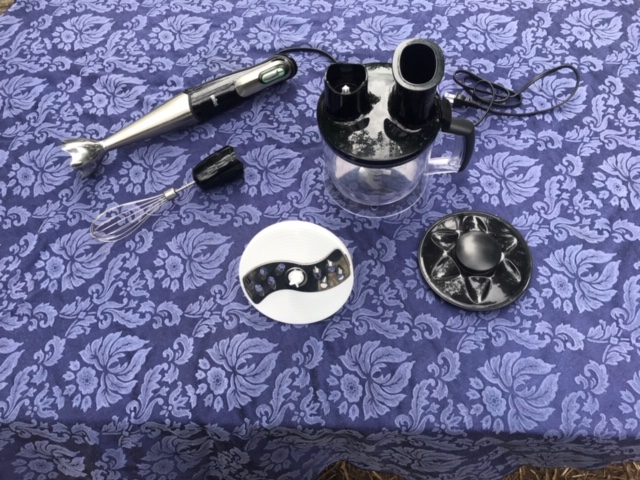
Here’s an Amazon affiliate link for this product if you want to check it out online (I think this might be the newer model): https://amzn.to/2SnItme
The array of material classes and sub-classes in this food processor include: several different plastics, varying in color [and in this case, the different colors correspond to different types of plastics; you can see some of these in the photos: clear plastic, black plastic, gray plastic, white plastic] – as well as rubber, in some handle elements and the electrical cord; stainless steel blades and accessories; brass alloy electrical plug components, and more!
This appliance was sent to me by one of my readers, and it has taken me months to find an entire day to do this one justice — because when I opened the box, I had to unwrap all the many pieces of what I eventually determined to be three separate-but-ambiguously-similar-looking multi-purpose, multi-component food processing appliances from different manufacturers (models with which I was unfamiliar) – combined and shipped together in a single very large box; figure out what everything was, which pieces went with which systems, figure out how all the subassemblies went together, and what the design/use of each was (exactly) – so I could understand how to describe/identify each of the components and report on belonged together; clean, photograph, test and write up everything. This was certainly not the first time I have had to stop and figure out and assemble a puzzle of sorts before I could begin to hope to commence testing, but this one kept slipping out of the queue, due to the much greater time required to sort it all out and the complexity of the required testing given the sheer number of different elements to test. [Sorry this took forever to test, J.!]
Note: In order to simplify my work (the testing that my readers support and that I report here on this blog), I currently no longer accept appliances shipped to me in the mail for testing UNLESS they are new and in the original box (or include only one single appliance with appropriate manuals and descriptions, etc.) This way I don’t have to do the detective work otherwise required to figure out what I am testing, and how it goes together and it’s intended operational design. Additionally, if ever I were sent something like this in the future, I would consider it to be all ten items in a “10-item” box (as there are in actuality 10 separate main components to this food processor — and many of those components are complex items (with multiple separate elements & materials). 😉
All tests reported on below were done with a Niton XL3T XRF instrument, in “Consumer Goods” mode, for a minimum of 60-seconds each. Each test result is science-based and replicable and done on a freshly-calibrated instrument. All metals detected in Consumer Goods mode (for the testing of any given component) are listed below; if a metal is not listed (for example if Lead is not listed), that means it was not detected by the XRF in the component tested.
While this food processing system did not test positive for any of the main toxicants that I generally look for (Lead, Mercury, Cadmium and Arsenic) and is – in that respect – a good choice, I personally don’t use many appliances in my home and when I do, usually choose simple single-function ones vs. multi-function ones with so many pieces (some piece would invariably get lost in our busy kitchen!)
Below are the XRF test results for each of the accessible components of this Braun multi-part food processor / hand-held blender appliance set:
Continue reading below image…
Component #1) Black plastic lid (1):
This is the large circular black plastic lid that is likely used as a top to the main pitcher of the item when storing it in the fridge. This component is a simple item made out of one type of plastic.
- Zinc (Zn): 41 +/- 6 ppm
- Copper (Cu): 22 +/- 9 ppm
- Iron (Fe): 47 +/- 15 ppm
- Titanium (Ti): 2,210 +/- 226 ppm
Component #2) Black plastic oval plunger (2):
- Barium (Ba): 188 +/- 66 ppm
- Nickel (Ni): 11 +/- 5 ppm
- Iron (Fe): 96 +/- 14 ppm
Component #3) Black plastic primary functional lid of unit:
1.) White plastic spacer element (3):
-
-
- Barium (Ba): 199 +/- 115 ppm
- Zinc (Zn): 58 +/- 8 ppm
-
2.) Lighter black plastic interlock tab on side (4):
-
-
- Zinc (Zn): 9 +/- 5 ppm
-
3.) Main black plastic of body of lid (5):
-
-
- Barium (Ba): 196 +/- 77 ppm
- Copper (Cu): 19 +/- 10 ppm
- Nickel (Ni): 10 +/- 6 ppm
- Iron (Fe): 101 +/- 17 ppm
-
Note: Rubberized gray gaskets on two parts of this component could not be removed (without incurring damage to the component), and could therefore not be reached by the XRF instrument to be tested separately.
Component #4) White plastic spindle with chopping blade:
1.) White plastic of spindle (6):
-
-
- Copper (Cu): 9 +/- 6 ppm
-
2.) Metal of blade, Stainless Steel 430/40 (7):
-
-
- Chromium (Cr): 115,300 +/- 900
- Copper (Cu): 887 +/- 260 ppm
- Nickel (Ni): 1,548 +/- 416 ppm
- Iron (Fe): 868,400 +/- 2,100 ppm
- Vanadium (V): 837 +/- 180 ppm
- Molybdenum (Mo): 6,716 +/- 224 ppm
- Manganese (Mn): 5,335 +/- 1,157 ppm
-
Continue reading below images…

Component #5) White plastic circular component with grating blade:
1.) White plastic of component (8):
-
-
- Barium (Ba): 153 +/- 90 ppm
- Iron (Fe): 24 +/- 14 ppm
-
2.) Metal of grating blade (9):
-
-
- Chromium (Cr): 138,200 +/- 1,000
- Copper (Cu): 532 +/- 218 ppm
- Nickel (Ni): 1,296 +/- 379 ppm
- Iron (Fe): 853,400 +/- 2,000 ppm
- Vanadium (V): 957 +/- 196 ppm
- Manganese (Mn): 4,700 +/- 1,149 ppm
-
Continue reading below image…
Component #6) Whisk attachment
1.) metal top of whisk (largest cylindrical metal part of whisk) – 304 Stainless Steel (10):
-
-
- Barium (Ba): 691 +/- 153 ppm
- Chromium (Cr): 153,600 +/- 1,000 ppm
- Tin (Sn): 132 +/- 48 ppm
- Copper (Cu): 3,182 +/- 402 ppm
- Nickel (Ni): 87,200 +/- 1,400 ppm
- Iron (Fe): 737,300 +/- 2,000 ppm
- Vanadium (V): 989 +/- 193 ppm
- Molybdenum (Mo): 1,848 +/- 118 ppm
- Cobalt (Co): 4,296 +/- 1,164 ppm
- Manganese (Mn): 10,400 +/- 1,000 ppm
-
2.) tines of whisk (11):
-
-
- Chromium (Cr): 21,300+/- 300 ppm
- Tin (Sn): 37 +/- 18 ppm
- Copper (Cu): 2,686 +/- 115 ppm
- Nickel (Ni): 4,665 +/- 151 ppm
- Iron (Fe): 65,600 +/- 1,000 ppm
- Bismuth (Bi): 18 +/- 10 ppm
- Vanadium (V): 172 +/- 109 ppm
-
Note: the tines of the whisk do not fully fill up the scope of the XRF instrument, so the readings are artificially low for any of the metals (as the ppm is a percentage of the total material tested and given the nature of whisk tines there is some background material – a metals-free background – “diluting” the readings.)
3.) spindle (top/insertion point to blender) of whisk (12):
-
-
- Chromium (Cr): 109,300+/- 5,500 ppm
- Copper (Cu): 15,100 +/- 1,500 ppm
- Nickel (Ni): 57,400 +/- 4,700 ppm
- Iron (Fe): 493,400 +/- 30,000 ppm
- Vanadium (V): 172 +/- 109 ppm
- Molybdenum (Mo): 1,534 +/- 193 ppm
- Niobium Nb: 1,563 +/- 148 ppm
- Manganese (Mn): 18,200 +/- 1,600 ppm
-
Note: white plastic element in center of whisk attachment was not accessible for testing with an XRF instrument without destruction of the component.
Continue reading below image…
Component #7) Main clear plastic pitcher of appliance.
1.) Clear plastic of component (13):
-
-
- Barium (Ba): 178 +/- 83 ppm
- Copper (Cu): 15 +/- 9 ppm
- Nickel (Ni): 9 +/- 6 ppm
-
2.) Gray plastic of Handle (14):
-
-
- Barium (Ba): 187 +/- 80 ppm
- Copper (Cu): 50 +/- 11 ppm
- Iron (Fe): 922 +/- 39 ppm
- Titanium (Ti): 1,311 +/- 215 ppm
-
Note: Center blade attachment point (white plastic disc and metal spindle) could not easily or effectively be tested with the XRF instrument without potentially destructive testing methods.
Continue reading below image…
 Component #8) Metal Shaft of Immersion Blender Element
Component #8) Metal Shaft of Immersion Blender Element
1.) Metal skin of component (Stainless Steel 304) (15):
-
-
- Chromium (Cr): 155,200 +/- 1,100 ppm
- Copper (Cu): 4,744 +/- 540 ppm
- Nickel (Ni): 86,700 +/- 1,700 ppm
- Iron (Fe): 736,000 +/- 2,400 ppm
- Vanadium (V): 698 +/- 189 ppm
- Molybdenum (Mo): 1,577 +/- 139 ppm
- Manganese (Mn): 12,000 +/- 1,200 ppm
-
1.) Metal of blade (Stainless Steel 301) (16):
-
-
- Chromium (Cr): 153,400 +/- 1,100 ppm
- Copper (Cu): 11,200 +/- 700 ppm
- Nickel (Ni): 78,400 +/- 1,700 ppm
- Iron (Fe): 734,800 +/- 2,600 ppm
- Vanadium (V): 882 +/- 204 ppm
- Molybdenum (Mo): 1,512 +/- 147 ppm
- Manganese (Mn): 16,700 +/- 1,300 ppm
-
1.) Gray plastic of interior (attachment point) (17):
-
-
- Zinc (Zn): 1,408 +/- 35 ppm
- Nickel (Ni): 36 +/- 11 ppm
- Iron (Fe): 353 +/- 36 ppm
- Titanium (Ti): 17,400 +/- 500 ppm
-
Note: other interior elements of this component were not accessible to be tested with an XRF without destruction.
Component #9) Black plastic cap for immersion blender (seen on top of whisk in photo below.)
1.) Black Plastic Elements (18):
-
-
- Barium (Ba): 134 +/- 77 ppm
- Zinc (Zn): 149 +/- 8 ppm
- Copper (Cu): 15 +/- 10 ppm
- Iron (Fe): 102 +/- 16 ppm
-
2.) White Plastic Elements (19):
-
-
- Chromium (Cr): 356 +/- 49 ppm
- Copper (Cu): 15 +/- 9 ppm
- Nickel (Ni): 25 +/- 8 ppm
- Iron (Fe): 724 +/- 35 ppm
-
Component #10) Main body of immersion blender handle & motor.
The areas tested below cover examples of all of the different types of surfaces / materials on this component
1.) Electrical Cord (20):
-
-
- Barium (Ba): 348 +/- 68 ppm
- Antimony (Sb): 1,274 +/- 39 ppm
- Bromine (Br): 12 +/- 6 ppm
- Zinc (Zn): 1,900 +/- 80 ppm
- Iron (Fe): 235 +/- 80 ppm
-
2.) Plug Tines (21) – C270 Yellow Brass (Lead-free!):
-
-
- Zinc (Zn): 329,800 +/- 2,700
- Copper (Cu): 615,700 +/- 3,300 ppm
- Nickel (Ni): 52,900 +/- 1,000 ppm
-
3.) Black Rubberized Back Grip (22):
-
-
- Antimony (Sb): 1,973 +/- 36 ppm
- Bromine (Br): 1,791 +/- 21 ppm
- Tin (Sn): 135 +/- 15 ppm
- Zinc (Zn): 55 +/- 8 ppm
- Copper (Cu): 933 +/- 24 ppm
- Iron (Fe): 94 +/- 17 ppm
- Bismuth (Bi): 65 +/- 13 ppm
-
4.) “Braun” Logo Area (silver on black plastic) (23):
-
-
- Barium (Ba): 160 +/- 59 ppm
- Chromium (Cr): 40 +/- 22 ppm
- Bromine (Br): 22 +/- 5 ppm
- Zinc (Zn): 14,400 +/- 100
- Iron (Fe): 724 +/- 35 ppm
-
5.) Power button (metal with green trim) – stainless steel 304(24):
-
-
- Chromium (Cr): 149,800 +/- 1,100 ppm
- Copper (Cu): 5,417 +/- 621 ppm
- Nickel (Ni): 97,200 +/- 1,900 ppm
- Iron (Fe): 723,100 +/- 2,700 ppm
- Vanadium (V): 808 +/- 187 ppm
- Molybdenum (Mo): 3,588 +/- 188 ppm
- Manganese (Mn): 15,600 +/- 1,400 ppm
-
That’s it!
Note: The only item of concern here for me is Antimony. Antimony is an ingredient of fire retardants and is often found in electrical components, and especially electrical cords [it seems like it has taken the place of Lead, which used to be commonly found in many electrical cords.] As a result, I always encourage hand washing after touching electrical cords (even if they are newer and thus more likely to be Lead-free) – because the “jury is still out” on the long-term implications of the pervasive use of trace/low-level Antimony that is found in so many household products today (electrical cords, blankets, plastic peanut butter jars, pillows, stuffed animal dolls, sofas, blow glass – and MANY other types of things that I have tested in recent years.)
As always, thank you for reading and sharing my posts.
Please let me know if you have any questions.
Never Miss an Important Article Again!
Join our Email List


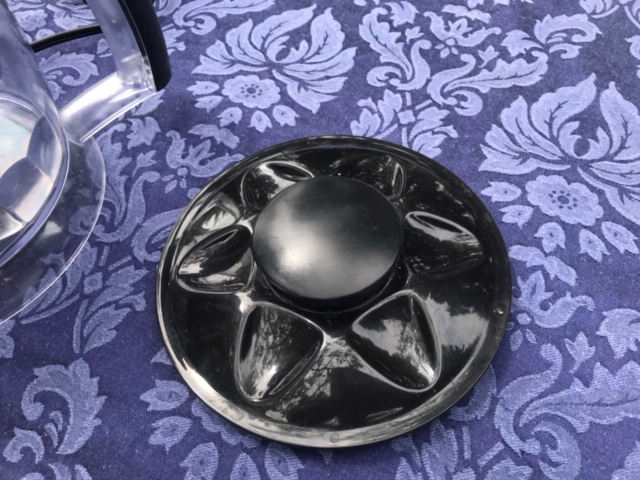
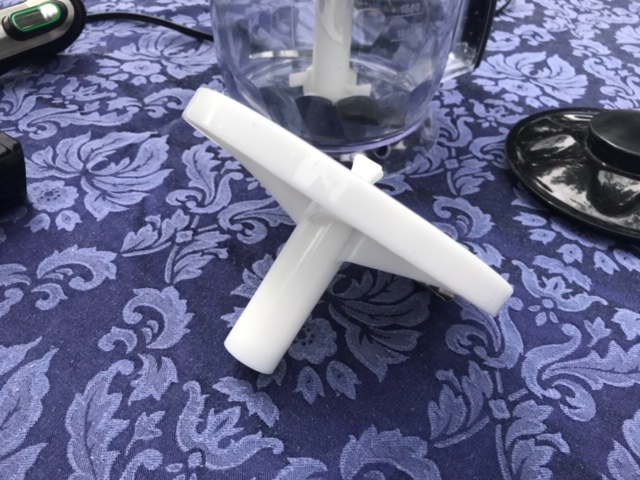
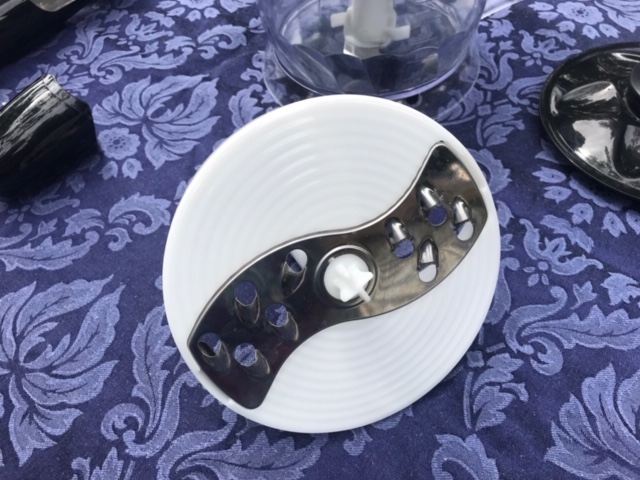
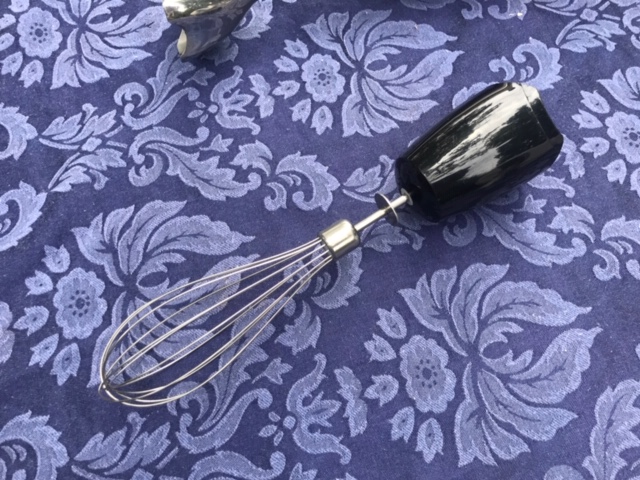
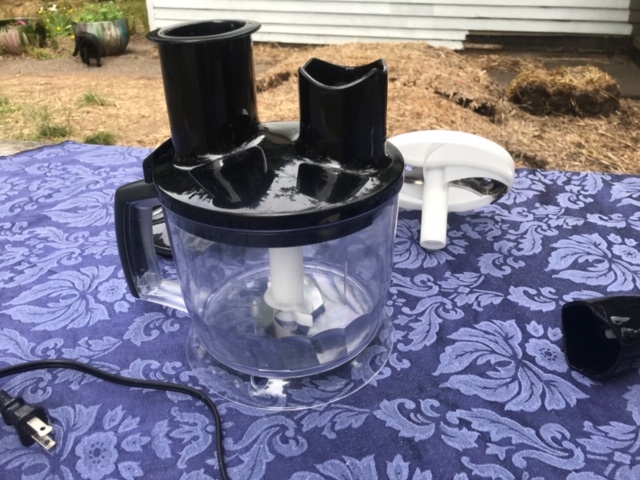
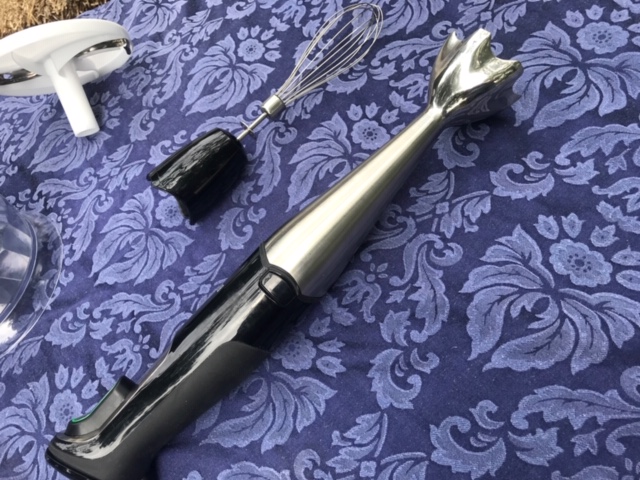
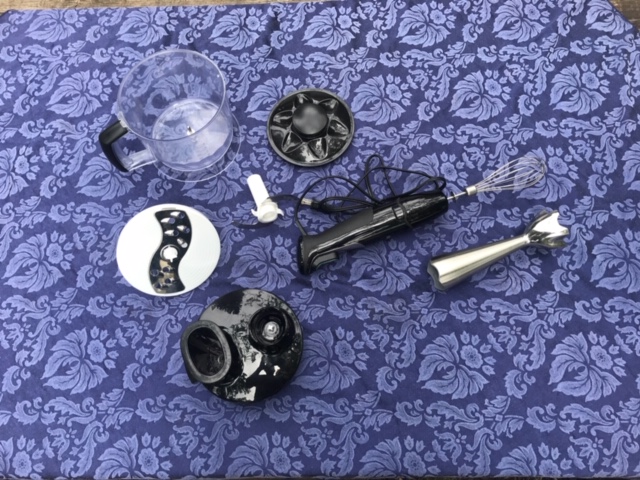

Thank You Tamara! This is great, so I can save space in an RV on small appliances if we ever get one in the future! 🙂
I just wonder if there is any chlorinated paraffins under this immersion stick?
Here are the articles about chlorinated paraffins. I found this on your site.
http://it-takes-time.com/2014/10/27/chlorinated-paraffins-in-hand-blenders/
http://it-takes-time.com/2016/08/15/replaced-my-immersion-blender/
Hi Kimberly,
I read the links. I hadn’t previously known about those concerns. In general I don’t like appliances – any appliances. Their disposable nature (short life-span) and heavy used of plastics has always made me steer clear of them. I was just talking to my husband about this this morning. He loves appliances. Give me a campfire, a cast iron skillet and an wooden spoon over a bunch of gadgets any day!
Tamara
After rereading these articles. It looks like this make and model does emit chlorinated paraffins.It is #6 on their list. I agree I going to stay away from the plastics!
Hi Kimberly,
Were you able to find an immersion blender that was free of both lead and chlorinated paraffins?
Thank you!
Apparently Braun claim that since 2017 their blender is certified and tested CF free, but they can’t guarantee for any models before 2017. That was according to a review in Australia on productreview for the multiquick 9, so not 100% sure. I’m going to contact Braun and ask directly, I would’ve thought this would be something they would mention in their product info.
https://www.productreview.com.au/listings/braun-multiquick-9-mq-9087x
I think that’s a different model of Braun in the study as #6. It wasn’t stainless steele and was the Multiquick 3 that was in the study. I believe this one is the multiquick 7 (https://www.braunhousehold.com/en-ca/multiquick-7-immersion-hand-blender-mq-777/p/4199-MQ777GOURMET).
Hi Tamara,
Thank you for your great work!
I have read that you recommended Bamix blenders but I cannot find that post anymore. Do you still recommend it?
I came across the lead concern in kitchen items when I ordered something from USA (A kitchenaid attachment, I’m in Europe). The P65 warning shocked me! Now I’m struggling to find reliable toxic-safe options for cooking.
Thank you for your posts!!
Z
I suggest you try Xtrema. They don’t have mixers, but they have a good range of cookingware.
Annabel you might want to read this post: https://tamararubin.com/2019/05/xtrema-cookware-an-important-point-the-clay-substrate-was-positive-for-only-4-metals-this-means-the-other-metals-found-are-all-in-the-glaze/
Tamara
Hi Tamara,
Were you able to test the part behind the bottom blades? Is it plastic? Here’s a photo for reference:
https://flic.kr/p/2mwwUW2
Yes! I am also wondering this, I bought this item after reading this post and I am concerned about that dull gray behind the blade as well.
Have you tested any Ninja products?
I am DESPERATE to find a new food processor to replace my old KitchenAid.
Since this testing was done in 2019, and a lot of companies changed product parts after covid, I am wondering if the newest model would still be lead free. Can you recommend a current food processor that you’ve recently tested? I am unable to chew things, and I am forced to rely on my food processor (that now I am getting rid of). I would appreciate anything you have to share, as this is the only article I can find regarding food processors.
P.S. Sorry, but I just realized this isn’t really just a food processor. Is there a safe food processor that you use or have tested?
Yes I too would like to know if there’s a safe or safer option recommendation for a food processor.
Tamara,
Any new information on testing of modern food processors?